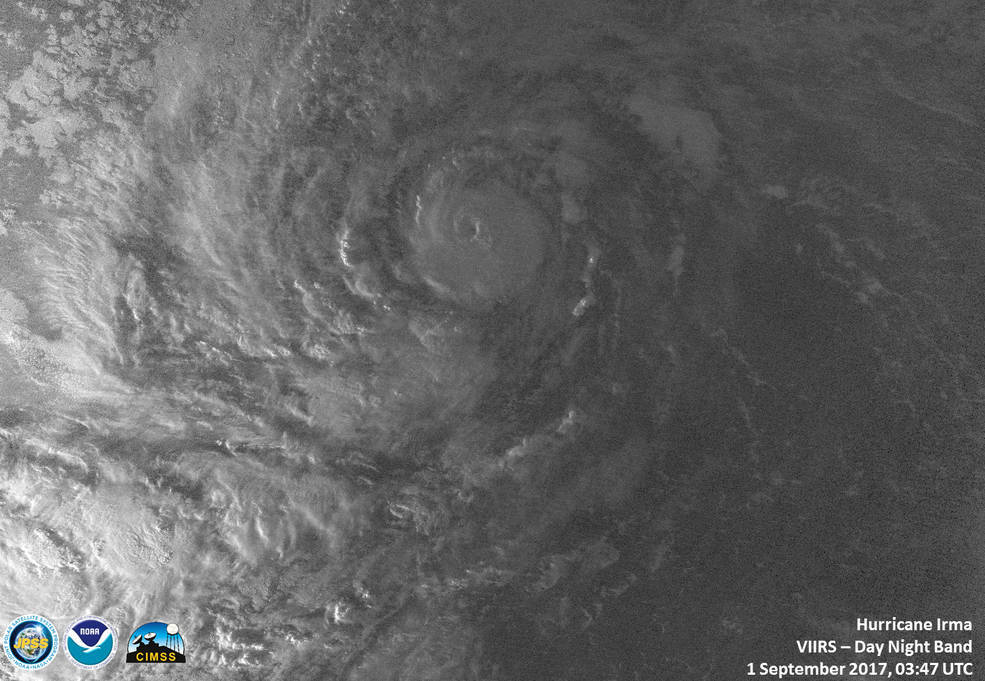
With Houston just beginning to contemplate its long recovery from the onslaught of Hurricane Harvey, which made landfall in Texas as a hurricane before dumping record amounts of rain over the region as a tropical storm, another monster storm is brewing in the Atlantic.
Hurricane Irma — which, as of 11 a.m. ET (1500 GMT) on Friday (Sept. 1), was far to the east of the Dominican Republic — rapidly intensified to nearly a Category 3 hurricane over the past 24 hours, according to the National Hurricane Center (NHC). Category 3 hurricanes have sustained wind speeds of at least 111 mph (178 km/h); Hurricane Irma has registered maximum wind speeds of 110 mph (175 km/h).
The storm is currently moving westward at 13 mph (21 km/h) but is expected to turn southwest on Saturday (Sept. 2). And although its wind speeds could increase or decrease in the coming days, Irma is still expected to be a powerful hurricane through the weekend, the NHC said in an advisory. The hurricane-force winds extend 15 miles (24 kilometers) from the center of the storm, and winds as strong as 74 mph (119 km/h) extend outward up to 90 miles (150 km). [In Photos: Hurricane Harvey Takes Aim at Texas]
However, Hurricane Irma is still too far out to sea to predict if and where it will make landfall in the United States, the NHC said.
This year's hurricane season is forecast to be a busy one, with between two and five storms with sustained wind speeds of at least 111 mph, and between 14 and 19 named storms predicted by the National Oceanic and Atmospheric Administration's most recent outlook. Already, the season has had eight named storms (Arlene, Bret, Cindy, Don, Emily, Franklin, Gert, Harvey and Irma), which is double the number typically expected by late August, according to the NHC.
Originally published on Live Science.
Get the Space.com Newsletter
Breaking space news, the latest updates on rocket launches, skywatching events and more!
Join our Space Forums to keep talking space on the latest missions, night sky and more! And if you have a news tip, correction or comment, let us know at: community@space.com.

Tia is the assistant managing editor and was previously a senior writer for Live Science, a Space.com sister site. Her work has appeared in Scientific American, Wired.com and other outlets. She holds a master's degree in bioengineering from the University of Washington, a graduate certificate in science writing from UC Santa Cruz and a bachelor's degree in mechanical engineering from the University of Texas at Austin. Tia was part of a team at the Milwaukee Journal Sentinel that published the Empty Cradles series on preterm births, which won multiple awards, including the 2012 Casey Medal for Meritorious Journalism.










